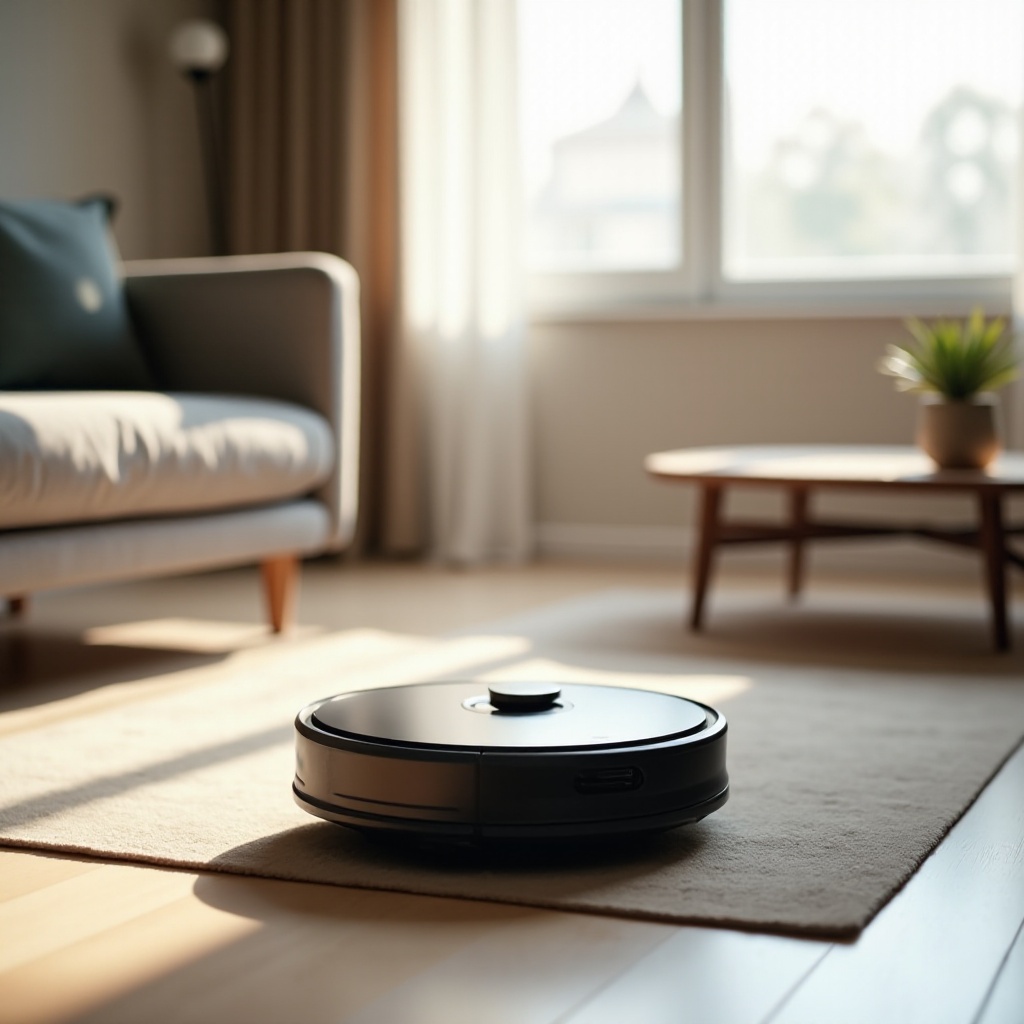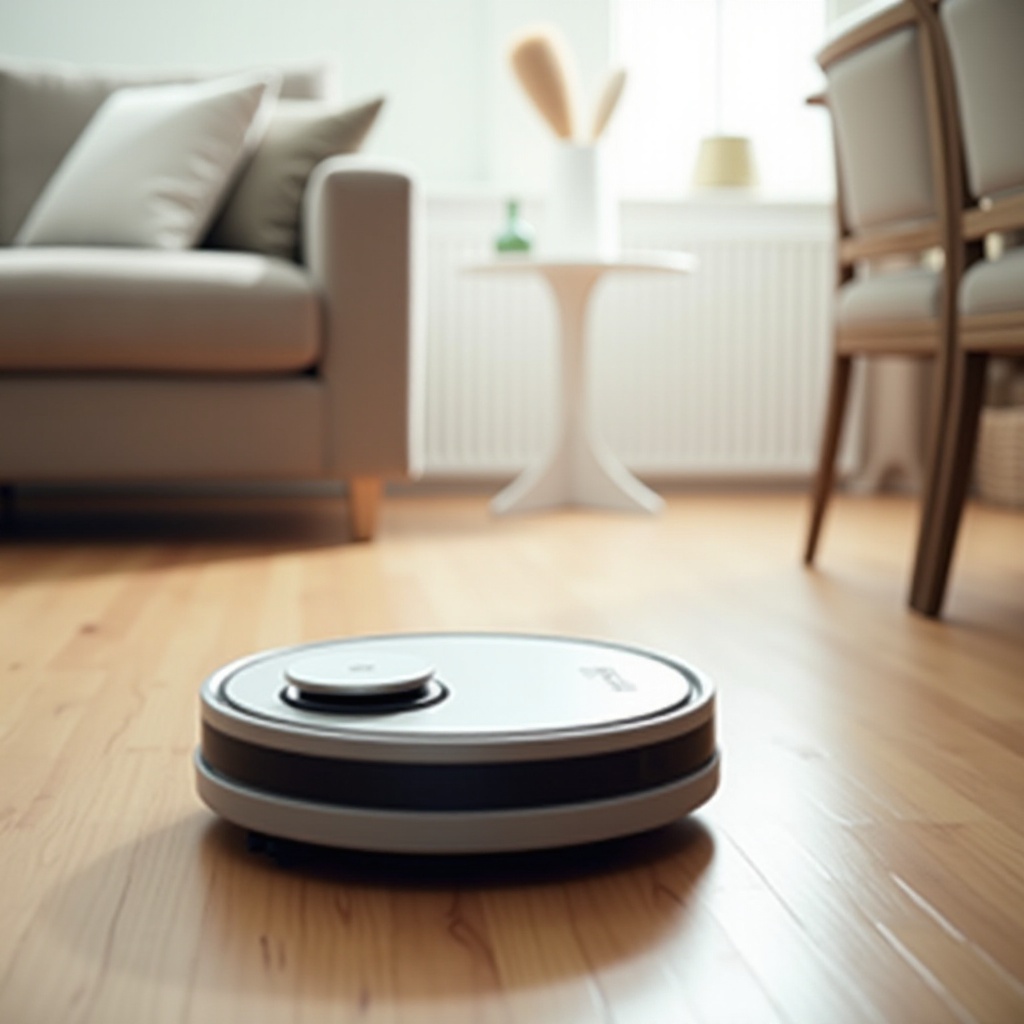Introduction
Robot vacuums have revolutionized home cleaning. Their ability to navigate and clean autonomously has saved countless hours for homeowners. However, while many contemporary models boast smart features like WiFi connectivity, these aren’t always necessary or desired. Robot vacuums without WiFi offer superior simplicity, privacy, and ease of use. This guide dives into why you might choose a robot vacuum without WiFi, reviews the top picks for 2024, and offers practical tips on choosing and maintaining your device.

Why Choose a Robot Vacuum Without WiFi?
Choosing a robot vacuum without WiFi can be a strategic decision for several reasons. First and foremost, simplicity. Non-WiFi models generally come with straightforward operations that don’t require navigating a smartphone app. This can be especially useful for those who aren’t tech-savvy or prefer less automation and integration with their personal devices.
Privacy is another significant consideration. Many people are becoming increasingly aware of their digital footprints and the data that smart devices can collect. A robot vacuum without WiFi ensures that your cleaning habits and home layout aren’t being broadcasted or stored online.
Lastly, reliability and ease of maintenance. WiFi-enabled vacuums can sometimes suffer from connectivity issues or require regular software updates. In contrast, non-WiFi models are typically more stable and easier to maintain, making them a hassle-free cleaning solution.

Top Picks for 2024
While non-WiFi robot vacuums might lack some of the bells and whistles of their connected counterparts, they don’t skimp on cleaning power. Here are the top picks for 2024:
Option 1: iRobot Roomba 675
Features and Benefits
The iRobot Roomba 675 is a stellar example of a high-performing, non-WiFi robot vacuum. It features a 3-stage cleaning system that loosens, lifts, and suctions dirt, dust, and hair from hard floors and carpets. With intelligent navigation, it can adapt to your home’s layout and employ Dirt Detect Sensors to clean highly trafficked areas more thoroughly.
Pros and Cons
- Pros:
- Powerful suction capabilities.
- Efficient cleaning pattern with cliff detect sensors.
- Long battery life and automatic docking.
- Cons:
- Lacks advanced scheduling options.
- No remote control for manual operation.
Option 2: Eufy RoboVac 11S
Features and Benefits
The Eufy RoboVac 11S is designed to be super-slim at just 2.85 inches, allowing it to clean under furniture where dust and dirt tend to gather. It sports a 1300Pa suction power, perfect for cleaning hard floors to medium-pile carpets. The triple-filter system ensures cleaner air while it works.
Pros and Cons
- Pros:
- Sleek, low-profile design.
- Quiet operation.
- Versatile cleaning modes and a long runtime.
- Cons:
- May struggle with high-pile carpets.
- No barrier strips included to mark restricted areas.
Option 3: Shark ION Robot Vacuum AV751
Features and Benefits
The Shark ION Robot Vacuum AV751 offers powerful suction and a tri-brush system for thorough cleaning performance. It works well on both carpet and hard floors and can be easily operated via a remote control. The adaptive navigation assures that the robot can manage large cleaning areas efficiently.
Pros and Cons
- Pros:
- Dual spinning side brushes for edge cleaning.
- Great for pet hair removal.
- Easy-to-use remote control.
- Cons:
- The dustbin requires frequent emptying.
- Less effective at recognizing small steps.
How to Choose the Best Non-WiFi Robot Vacuum
Selecting the best non-WiFi robot vacuum involves considering several key factors:
- Cleaning Power: Ensure the robot has strong suction capabilities suitable for your floor types.
- Battery Life: Look for models that offer longer battery life to cover larger areas.
- Navigation Ability: Check that the vacuum has advanced sensors to avoid obstacles and stairs.
- Maintenance: Consider how easy it is to maintain, including bin emptying and filter changing.
- Special Features: Look out for helpful features like scheduling, remote control operation, and specific cleaning modes for various surfaces.
Tips for Maintaining Your Robot Vacuum
Now that you know which models are top-rated, it’s crucial to understand how to maintain your robot vacuum for optimal performance. Below are some tips:
- Regular Cleaning: Empty the dustbin after each use to ensure maximum efficiency. Clean the filters every week and replace them as recommended by the manufacturer.
- Brush Maintenance: Remove hair and debris from the brushes frequently to prevent clogging.
- Sensor Care: Wipe the sensors with a dry cloth to ensure the robot can navigate properly.
- Battery Charge: Keep the robot docked and charging when not in use to maintain battery health.
By following these maintenance tips, you can ensure that your robot vacuum operates efficiently and lasts for years.

Conclusion
Opting for a non-WiFi robot vacuum doesn’t mean compromising on quality. With numerous excellent choices on the market, you can enjoy an effective cleaning experience without the complexity or privacy concerns associated with connected devices. Remember to maintain your vacuum well to prolong its lifespan and efficiency.
Frequently Asked Questions
How do robot vacuums without WiFi operate?
Non-WiFi robot vacuums operate using internal sensors and pre-programmed cleaning algorithms. Users can control them through physical buttons or remote controls.
Are non-WiFi robot vacuums as effective as WiFi models?
Yes, non-WiFi models can be just as effective in terms of cleaning performance. They may lack smart features but are designed to clean floors efficiently.
What are the main benefits of using a robot vacuum without WiFi?
The primary benefits include enhanced privacy, simpler operation, and reduced reliance on apps and internet connectivity, making them ideal for those who prefer straightforward and reliable cleaning solutions.
